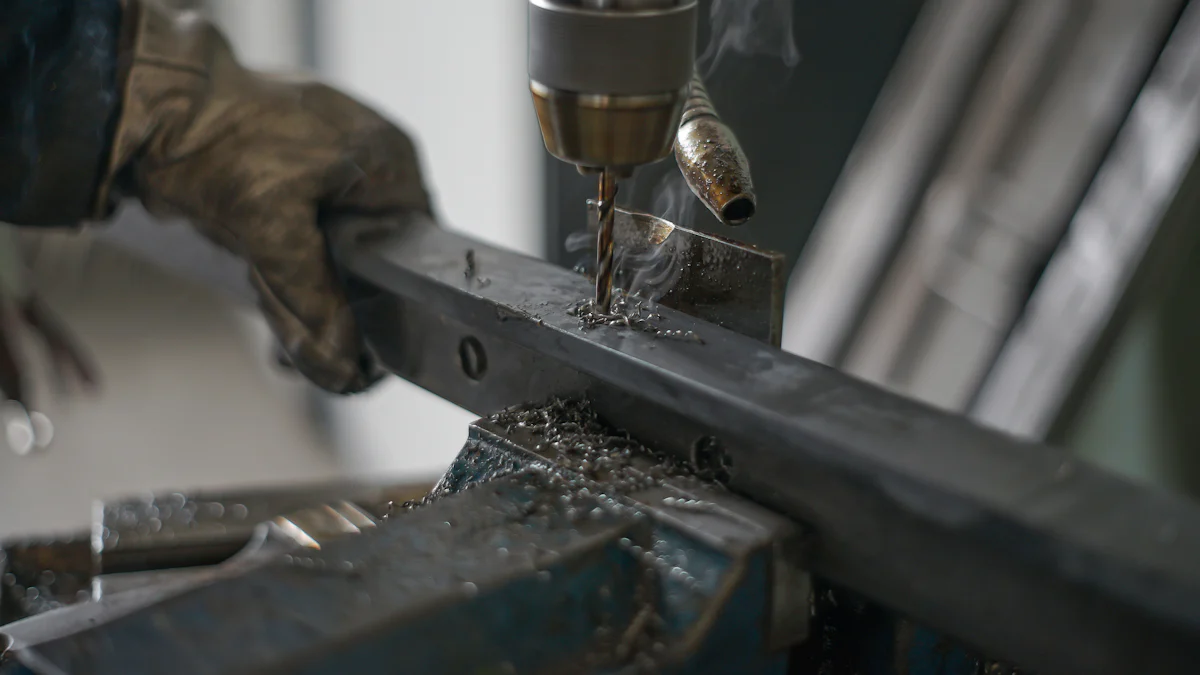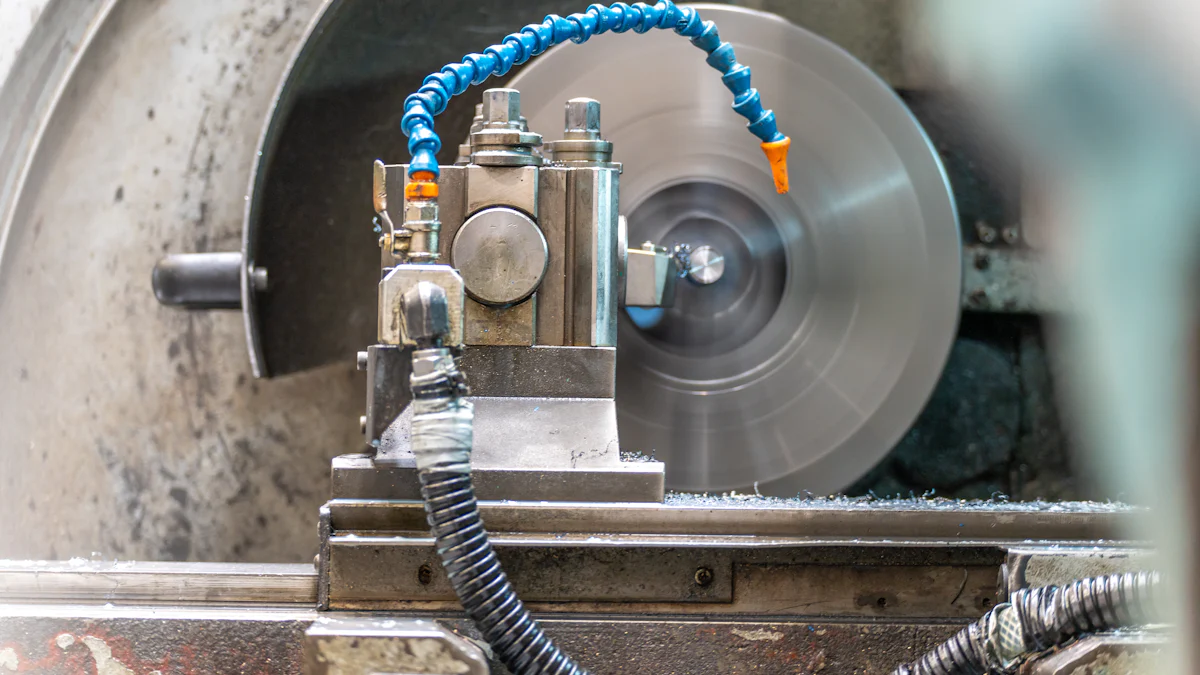
News

Image Source: pexels
A metal induction heater machine offers a revolutionary way to heat metals with precision and efficiency. It utilizes electromagnetic induction to generate heat directly within the metal, eliminating the need for physical contact. This process ensures rapid and localized heating, making it ideal for applications requiring accuracy. Unlike traditional methods, the Induction Heating Machine converts over 90% of energy into heat within the material, significantly reducing energy waste. Whether you’re working with steel, aluminum, or copper, this technology delivers consistent results. Tools like the Portable Handheld Induction Heater further enhance flexibility for small-scale tasks, while the Induction Machine for Copper Silver Brazing provides specialized solutions for joining metals effectively.
Key Takeaways
Metal induction heater machines use electromagnetic induction to heat metals efficiently and precisely, minimizing energy waste.
Key components include a power supply, induction coil, and cooling system, each playing a crucial role in the machine's functionality.
Induction heating allows for rapid and localized heating, making it ideal for applications like metal forging, heat treatment, and brazing.
The technology offers significant benefits, including faster heating times, precise temperature control, and reduced operational costs.
Safety is enhanced with no open flames or direct contact with heat sources, making induction heating suitable for various environments.
Induction heating is environmentally friendly, converting over 90% of energy into heat and producing no harmful emissions.
Compact and portable designs cater to small-scale tasks, while industrial configurations handle heavy-duty applications, showcasing the versatility of induction heating.
Components of a Metal Induction Heater Machine
Understanding the components of a metal induction heater machine helps you appreciate its functionality and versatility. Each part plays a vital role in ensuring efficient and precise heating for various applications.
Key Components
Power Supply
The power supply serves as the backbone of the machine. It converts electrical energy into the alternating current required for induction heating. Modern induction heaters often operate at medium or radio frequencies, depending on the application. This component ensures a consistent energy flow, enabling the machine to generate the magnetic fields necessary for heating metals effectively.
Induction Coil
The induction coil, also known as the inductor, is where the magic happens. This coil creates a strong magnetic field when the alternating current flows through it. When you place a conductive material, such as metal, within this field, eddy currents are induced in the material, generating heat. The shape and size of the coil can vary based on the specific heating task, offering flexibility for different applications.
Cooling System
The cooling system prevents overheating, ensuring the machine operates efficiently and safely. Induction heating generates significant heat, which can damage components if not managed properly. Many machines use water or air-based cooling systems to maintain optimal temperatures. This feature extends the lifespan of the equipment and ensures consistent performance.
Design Variations
Compact and Portable Designs
Compact and portable designs cater to users who need flexibility and mobility. These machines are ideal for small-scale tasks, such as jewelry making or automotive repairs. Tools like the Portable Handheld Induction Heater exemplify this design, offering convenience without compromising performance.
Industrial-Specific Configurations
Industrial-specific configurations are tailored for large-scale operations. These machines are designed to handle heavy-duty tasks, such as forging, hardening, and brazing. They often include advanced features like programmable controls and custom coil designs to meet the demands of industrial applications. The Induction Machine for Copper Silver Brazing is a prime example, providing specialized solutions for joining metals in manufacturing processes.
By combining these components and design variations, a metal induction heater machine becomes a versatile tool for both small-scale and industrial applications. Its efficiency, precision, and adaptability make it an essential asset in modern metalworking.
How a Metal Induction Heater Machine Works
Understanding how a metal induction heater machine operates can help you appreciate its efficiency and precision. The process relies on the principles of electromagnetic induction, which allow for non-contact heating of conductive materials.
The Science of Induction Heating
Electromagnetic Induction and Eddy Currents
Electromagnetic induction forms the foundation of this technology. When alternating current flows through the induction coil, it creates a magnetic field. This magnetic field interacts with the conductive material placed within it, inducing eddy currents in the metal. These currents flow in circular patterns, generating heat due to the resistance of the material. This phenomenon, known as Joule heating, ensures that the heat is produced directly within the metal, eliminating the need for external heat sources.
"As the eddy currents flow through a medium, there will be some resistance to the movement of the electrons. The eddy currents flow against the electrical resistivity of the metal, and they generate localized heat without any direct contact between the part and the inductor."
Conversion of Electrical Energy into Heat
The conversion of electrical energy into heat occurs seamlessly during this process. The alternating current in the induction coil transfers energy to the metal through the magnetic field. This energy excites the electrons in the metal, causing them to move and collide. These collisions produce heat, which is localized to the specific area exposed to the magnetic field. This precise energy transfer minimizes waste and ensures efficient heating.
Step-by-Step Process
Power Supply Generates Alternating Current
The process begins with the power supply. It generates alternating current, which is essential for creating the magnetic field. The frequency of this current depends on the application, with higher frequencies used for smaller, more delicate tasks and lower frequencies for larger components.
Current Flows Through the Induction Coil, Creating a Magnetic Field
The alternating current flows through the induction coil, producing a magnetic field around it. This field is dynamic, constantly changing direction due to the alternating nature of the current. The strength and shape of the field depend on the design of the coil, which can be customized for specific tasks.
Magnetic Field Induces Eddy Currents in the Metal, Generating Heat
When you place a conductive material, such as steel or copper, within the magnetic field, eddy currents are induced in the metal. These currents generate heat as they encounter resistance within the material. The heat is produced directly inside the metal, ensuring rapid and uniform heating.
Heat is Localized and Controlled for Precision
The heat generated by the eddy currents remains localized to the area exposed to the magnetic field. This allows you to control the heating process with precision, targeting specific sections of the metal without affecting the surrounding areas. This level of control makes the metal induction heater machine ideal for applications requiring accuracy, such as brazing or hardening.
By following these steps, the metal induction heater machine delivers efficient and precise heating. Its ability to convert electrical energy into localized heat makes it a valuable tool for various industries, from automotive repairs to large-scale manufacturing.
Applications of Metal Induction Heater Machines

Image Source: pexels
Please give us a message